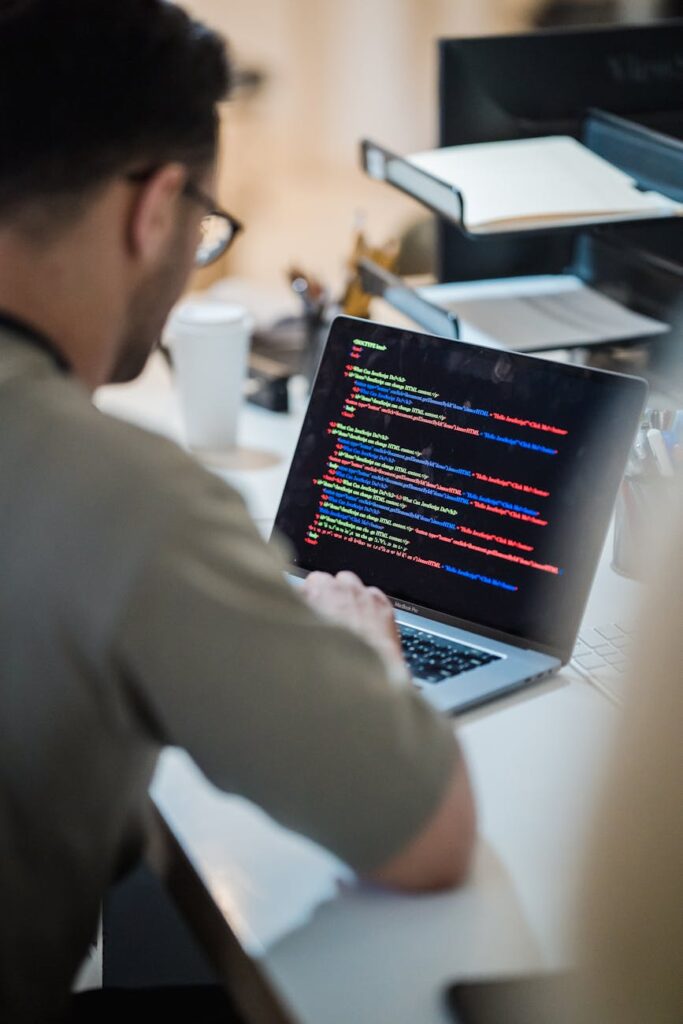You’ve Heard of Chainlink, But Do You Actually Know What It Does?
Let’s be honest. For many people in the crypto space, Chainlink ($LINK) is just another coin on the chart. It goes up, it goes down. But focusing solely on the price misses the entire point. It’s like judging a master architect by the price of a single brick. The real story, the one that underpins its long-term value, lies in the vast and growing ecosystem of real-world Chainlink use cases. This isn’t just about crypto; it’s about connecting blockchains to everything else.
Think of a smart contract on Ethereum as a super-smart vending machine. It’s completely trustworthy and will execute its programming perfectly. If you put in $2, it will give you a soda. Always. But what if you wanted that vending machine to dispense an umbrella only when it’s actually raining outside? The vending machine has no windows. It can’t see the weather. It’s stuck in its own little world. That’s the problem every blockchain faces. They are incredibly secure but fundamentally disconnected from real-world data. Chainlink is the window. It’s the trusted weather service that tells the vending machine, “Yep, it’s raining. Dispense the umbrella.”
Key Takeaways
- The Oracle Problem: Blockchains can’t access external, off-chain data on their own. Chainlink solves this by acting as a secure, decentralized ‘oracle’ network that brings real-world data onto the blockchain.
- DeFi’s Backbone: The multi-trillion dollar Decentralized Finance (DeFi) industry heavily relies on Chainlink Price Feeds for accurate asset pricing, enabling lending, borrowing, and stablecoins.
- Beyond Finance: Chainlink use cases extend to parametric insurance (automated payouts for weather events), dynamic NFTs (artwork that changes based on real-world data), and provably fair gaming (verifiable randomness).
- The Future is Connected: Advanced services like the Cross-Chain Interoperability Protocol (CCIP) are positioning Chainlink as the fundamental messaging layer for a future ‘internet of blockchains,’ connecting disparate networks and traditional financial systems.
First, Let’s Demystify the “Oracle Problem”
Before we can appreciate the solution, we have to truly grasp the problem. Blockchains are deterministic systems. This is a fancy way of saying that every node on the network must get the exact same result when processing a transaction. If they could all just pull data from a random website, they’d get slightly different answers at slightly different times, and the whole consensus mechanism would break down. The blockchain would fork into chaos.
So, they are intentionally isolated. They can only see what happens *inside* their own network. This is great for security but terrible for utility. What good is a global financial system that doesn’t know the price of a US dollar? What good is an insurance contract that doesn’t know if a hurricane made landfall? It’s not much good at all.
This is the oracle problem. You need a bridge. But a single, centralized bridge (like one company’s API) reintroduces a single point of failure, the very thing blockchain was built to avoid. If that one API gets hacked, goes offline, or just provides bad data, the ‘unstoppable’ smart contract can be manipulated. Garbage in, garbage out.
Chainlink’s genius was to decentralize the bridge itself. Instead of one source, it creates a network of independent oracle nodes. These nodes pull data from numerous high-quality sources, aggregate it, and come to a consensus on the correct value before delivering it to the smart contract. It’s trust and security, end-to-end.

The Beating Heart: Powering Decentralized Finance (DeFi)
If there’s one area where Chainlink isn’t just helpful but absolutely essential, it’s DeFi. Without reliable, real-time data, the entire system would collapse in an instant. It is, without exaggeration, the foundational pillar holding up a multi-billion dollar industry.
Price Feeds: The Unsung Heroes of DeFi
Have you ever used a platform like Aave, Compound, or MakerDAO? Every time you lend, borrow, or mint a stablecoin, you are interacting with a Chainlink Price Feed under the hood. These protocols need to know the precise, real-time market value of assets like ETH, WBTC, and USDC to function. Why? Two words: collateral and liquidations.
Imagine you deposit $10,000 worth of ETH as collateral to borrow $5,000 of USDC. The protocol needs to constantly monitor the price of ETH. If the price of ETH drops significantly, say to where your collateral is only worth $6,000, your loan becomes undercollateralized and risky. The protocol must automatically liquidate (sell) your ETH to cover the debt. If the price data is slow, inaccurate, or manipulated, someone could either be liquidated unfairly or the entire protocol could become insolvent. Chainlink Price Feeds are the industry standard, securing tens of billions of dollars across DeFi by providing this critical, tamper-proof data.
Proof of Reserve: Keeping Stablecoins Stable (and Projects Honest)
Many crypto assets claim to be backed by real-world reserves. A stablecoin might be backed 1:1 by US dollars in a bank account. A wrapped token like WBTC claims each token is backed by one Bitcoin held in custody. But how do you prove it? Historically, you’d have to trust a company’s quarterly audit.
Chainlink Proof of Reserve (PoR) automates this trust. It creates a decentralized oracle network that monitors the reserve assets in real-time—whether in a bank account (via API) or a crypto wallet—and posts the data on-chain for anyone to see. This provides a level of transparency that was previously impossible. If the reserves ever drop below the value of the circulating tokens, smart contracts can automatically take protective measures. It’s a powerful tool for on-chain auditing.
Lending and Borrowing Protocols
Everything in DeFi lending comes back to accurate data. Protocols use Chainlink Price Feeds not just for liquidations but also to determine borrowing power and interest rates. Dynamic interest rates often adjust based on supply and demand, but knowing the underlying value of the assets being supplied and demanded is the critical first step. Without this, you can’t have a functioning money market.
Beyond Finance: Exploring Diverse Chainlink Use Cases
While DeFi was the first killer app, the really exciting part is seeing how this technology is bleeding into almost every other industry. The ability to connect smart contracts to any external data or system unlocks a staggering range of possibilities.
Parametric Insurance: Automated Payouts You Can Trust
Think about traditional insurance. You experience an event (a flood, a flight delay), you file a claim, and then you wait for an adjuster to approve it. It’s a slow, expensive, and often adversarial process.
Parametric insurance on the blockchain changes the game. A smart contract is created with predefined terms: “IF a hurricane of Category 3 or higher makes landfall in Miami-Dade County according to the National Weather Service, THEN automatically pay out X amount to the policyholder.”
Chainlink is the piece that makes this work. Its oracles securely fetch the data from the trusted National Weather Service API. The moment the condition is met, the smart contract executes the payout. No claims adjuster, no paperwork, no delays. This is already being used for crop insurance based on rainfall data and flight delay insurance based on aviation data.
“The value of a smart contract is only as good as the data it relies on. Without a secure connection to the real world, a smart contract is just a piece of isolated code with no real-world relevance.”
Dynamic NFTs and Blockchain Gaming
Most NFTs are static images. But what if they could evolve based on real-world events? A ‘player card’ NFT of an athlete could see its stats and appearance change in real-time based on their performance in a game, with data fed by Chainlink from a sports API like ESPN. An artwork NFT could change its colors based on the weather in New York City.

In gaming, fairness is paramount. Chainlink Verifiable Random Function (VRF) provides a provably fair and tamper-proof source of randomness. When you open a loot box or a pack of digital cards, you can be certain the outcome was genuinely random and not manipulated by the game developer. This builds a huge amount of trust with the player base and is a cornerstone of Web3 gaming.
Real-World Assets (RWAs): Bridging Trillions to the Blockchain
This is arguably one of the biggest narratives in finance today. Real-World Assets refer to tokenizing things like real estate, fine art, private equity, and government bonds and bringing them onto the blockchain. This could unlock trillions of dollars in illiquid value, making these assets more accessible and transferable.
But how does a token representing a share in an apartment building know its current valuation? How does a DeFi protocol accept a tokenized Treasury bond as collateral if it doesn’t know its market price? You guessed it. Chainlink oracles are needed to provide pricing and valuation data for these off-chain assets, creating a secure bridge for the global financial system to move on-chain.
The Next Frontier: Chainlink’s Advanced Services
Chainlink is not standing still. The team is constantly building out new services that expand the capabilities of what smart contracts can do, solidifying its role as the go-to platform for off-chain connectivity.
CCIP: The “Internet of Contracts”
The Cross-Chain Interoperability Protocol (CCIP) is a monumental step forward. Today, the blockchain world is fragmented. An application on Ethereum can’t easily talk to an application on Avalanche or Polygon. It’s like the early internet before the standardized TCP/IP protocol allowed all computers to communicate.
CCIP aims to be that standard for blockchains. It allows for the secure transfer of both data and value across different chains. This means a user could vote on a governance proposal on one chain, triggering an action on a completely different chain, all in one seamless transaction. It even enables traditional financial institutions to connect their backend systems to any blockchain, which is why SWIFT, the global banking messaging system, is actively piloting its use.
Verifiable Random Function (VRF): Provably Fair Randomness
We touched on this with gaming, but its importance can’t be overstated. Any application that requires a truly random outcome—from selecting a winner in a lottery to randomly assigning duties in a DAO—needs a source of randomness that can’t be predicted or manipulated. VRF provides cryptographic proof that the randomness was generated fairly, which users can verify for themselves. It’s a fundamental building block for creating trust in decentralized applications.
Automation: The Smart Contract Butler
Smart contracts are great, but they’re not self-executing. They need a ‘poke’ to wake them up and check if conditions have been met. Traditionally, this required a centralized server running a script—a weak link in a decentralized system. Chainlink Automation is a decentralized network of nodes that does this job reliably. It allows developers to create time-based triggers (“execute this function every day at 9 AM”) or logic-based triggers (“rebalance this portfolio if asset X deviates by 5%”), creating truly autonomous and self-sustaining smart contracts.
Conclusion: The Connective Tissue of Web3
When you zoom out, the picture becomes clear. The value of Chainlink isn’t derived from speculation, hype, or a charismatic founder. It’s derived from pure, undeniable utility. It is the essential, decentralized infrastructure that makes blockchains useful for more than just moving tokens around.
It acts as the secure connective tissue between the isolated world of blockchains and the massive, data-rich world we all live in. It allows smart contracts to react to financial markets, weather patterns, sports scores, IoT sensors, and enterprise backends. With innovations like CCIP, it’s now becoming the connective tissue between blockchains themselves.
So the next time you look at the LINK chart, remember what it represents. It represents every DeFi loan secured, every insurance policy automated, every NFT that dynamically changes, and every fair outcome in a Web3 game. The real-world Chainlink use cases are what’s driving the value, and that’s a foundation built on something far more substantial than market sentiment: it’s built on technology that works, and that the world increasingly needs.


